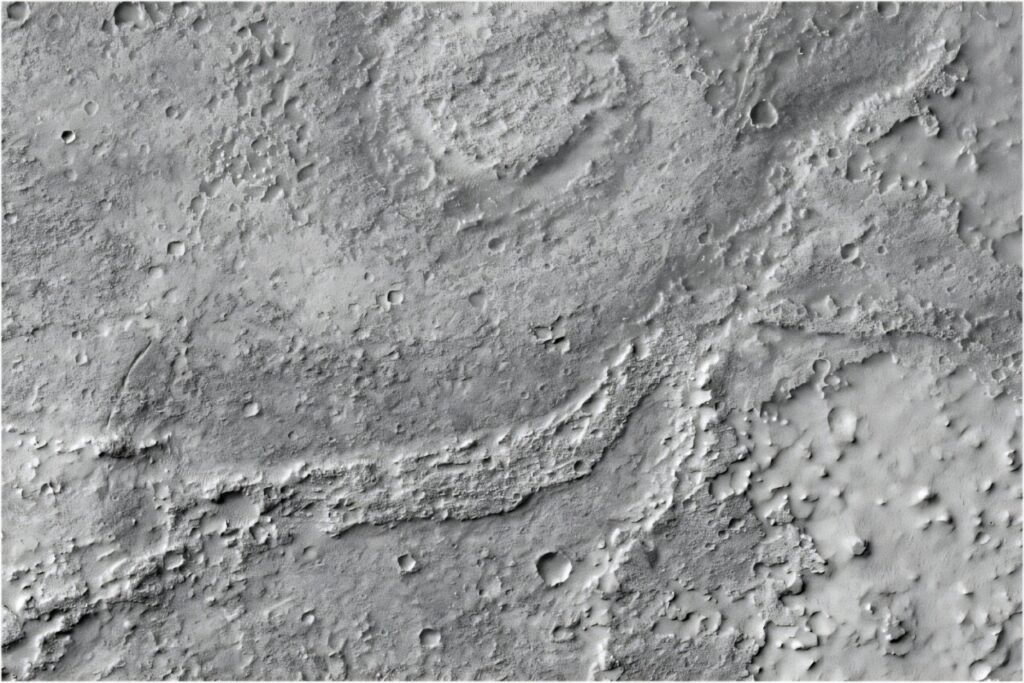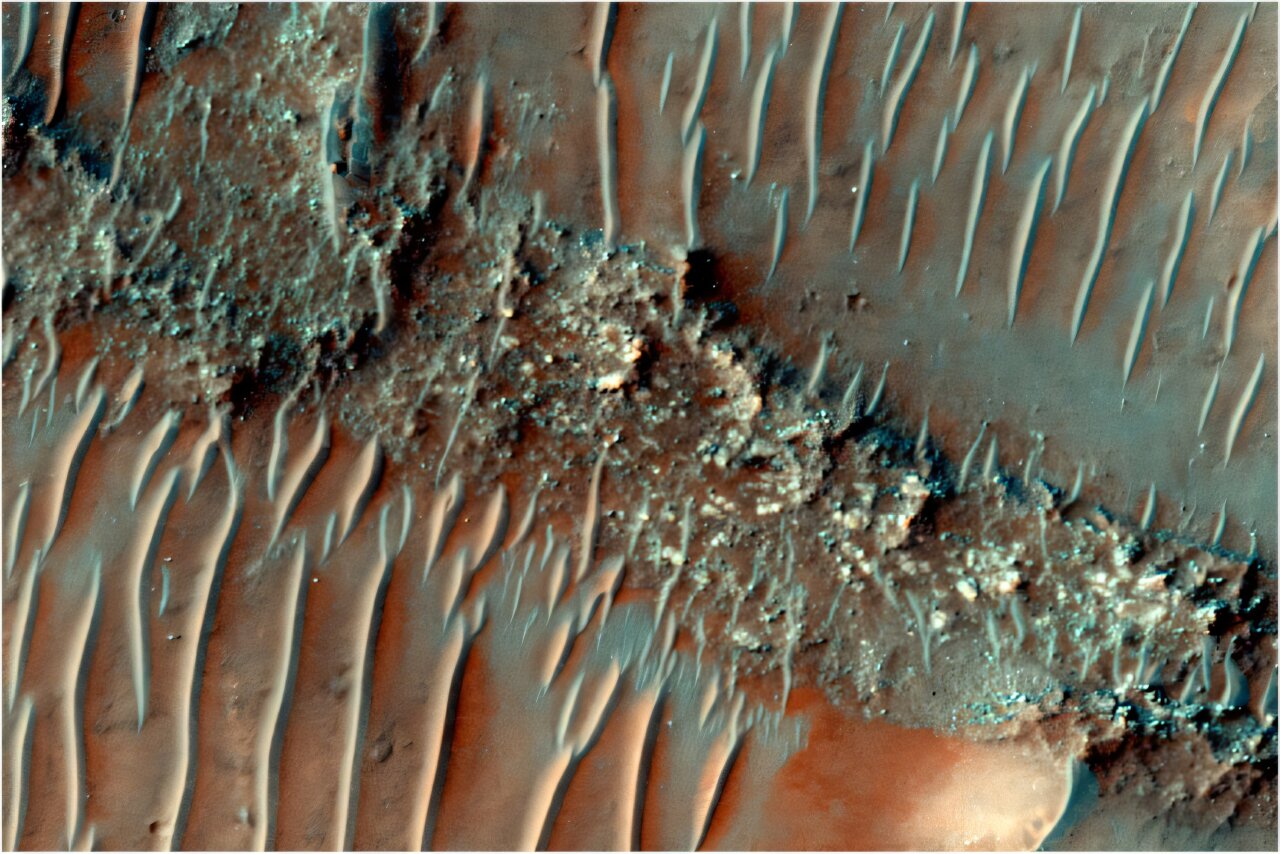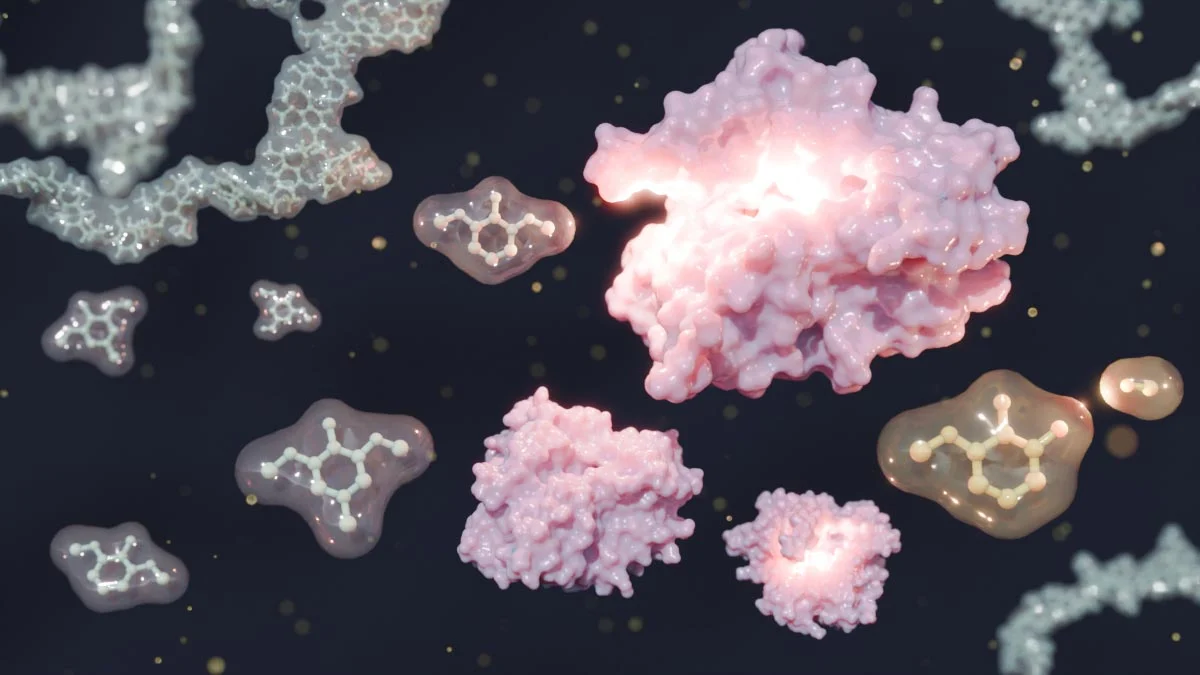Color image of a flat top, heavily eroded FSR. Sand dunes can be seen migrating over the top of the FSR. Credit: HiRISE Image: ESP_085386_1505 NASA/JPL/University of Arizona
A River That Rewrote Mars’ History
A recent discovery suggests just that. Scientists have uncovered evidence of a vast, ancient river system on Mars — a meandering channel wider than the Mississippi. This revelation paints a radically different picture of Mars’ climate history, pointing to a time when the Red Planet may have been much wetter than previously believed.
Clues Hidden in the Landscape
The research, led by geologist Francesco Salese from Utrecht University, used high-resolution satellite imagery from NASA’s Mars Reconnaissance Orbiter. The images show a 500-meter-wide riverbed with curves and sediment patterns strikingly similar to those formed by water flow on Earth. Like a fossilized fingerprint, this Martian river preserved evidence of a climate capable of supporting stable, long-term water flow — not just fleeting floods.
“This isn’t just a trickle,” Salese told Nature. “This river system existed long enough to carve a deep, winding path — and that requires a sustained water cycle.”
Mars Wasn’t Always a Desert
Imagine Mars as a barren desert. Now, imagine lifting a dusty curtain to reveal a world once shaped by rivers and rain. That’s what this discovery does. It joins a growing body of evidence, including recent findings from NASA’s Perseverance Rover, which show that Mars once had a thick atmosphere and flowing groundwater.
The river likely dates back 3.5 billion years to Mars’ Noachian period — a time when conditions may have allowed life to emerge. This opens the tantalizing possibility that ancient Martian microbes could have thrived near these riverbanks.
Why This Matters for Future Missions
Understanding Mars’ watery past isn’t just about rewriting planetary history. It’s about looking ahead. These river systems might point to underground aquifers that could support future astronauts — or even point to locations where signs of ancient life are best preserved.

A moderately eroded fluvial sinuous ridge (FSR), with lots of small craters in it, that stands out clearly above the surrounding material. To the north east it emerges from a small valley and becomes progressively clearer to the west, until it disappears. There is a clear curve in the FSR, likely a meander. North of the FSR is a round, flat feature that was likely an impact crater which was filled with water or sediment. CTX image: MurrayLab_V01_E020_N-20_Mosaic. Credit: NASA/JPL/MSSS/The Murray Lab
The study also provides vital insights for NASA’s Artemis program and future human-led missions, which could benefit from mapping ancient water sources. Water, after all, isn’t just for drinking — it can be split into oxygen and hydrogen, essential for breathable air and rocket fuel.
Related Reading on DailySciTech:
- Mars’ Hidden Ocean: A Subterranean Sea That Could Rewrite the Red Planet’s Story
- Moonlight Meets Megastructure: A Celestial Crown for the World’s Largest Telescope
One Planet, Many Stories
This ancient river is more than a channel through Martian soil — it’s a chapter in the planet’s untold story. Like reading the lines on a dried-up riverbed, scientists are piecing together a climate history that may one day connect Mars to Earth in more ways than we imagined.
Want to see where this story goes next? Keep an eye on NASA’s Mars program and the European Space Agency for updates on sample-return missions that could tell us if Mars ever hosted life.
More information: The Fluvial History of Noachis Terra, Mars, conference.astro.dur.ac.uk/eve … 7/contributions/607/
Explore More
Did you enjoy this story? Let us know in the comments, share it with a fellow space enthusiast, and dive into our feature on biosignatures on distant exoplanets — the next frontier in the search for life.










